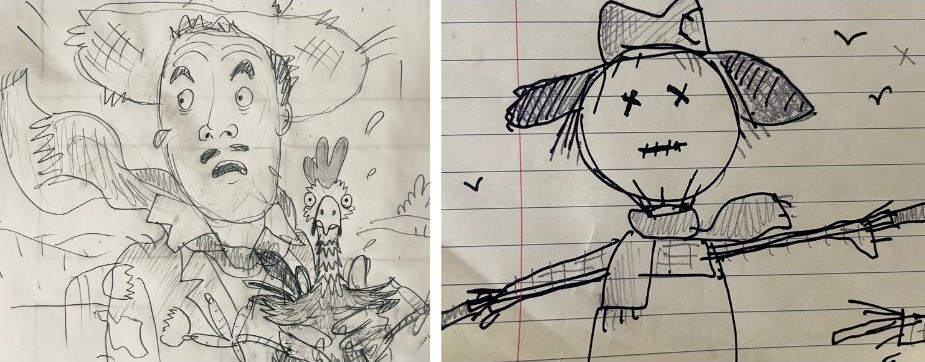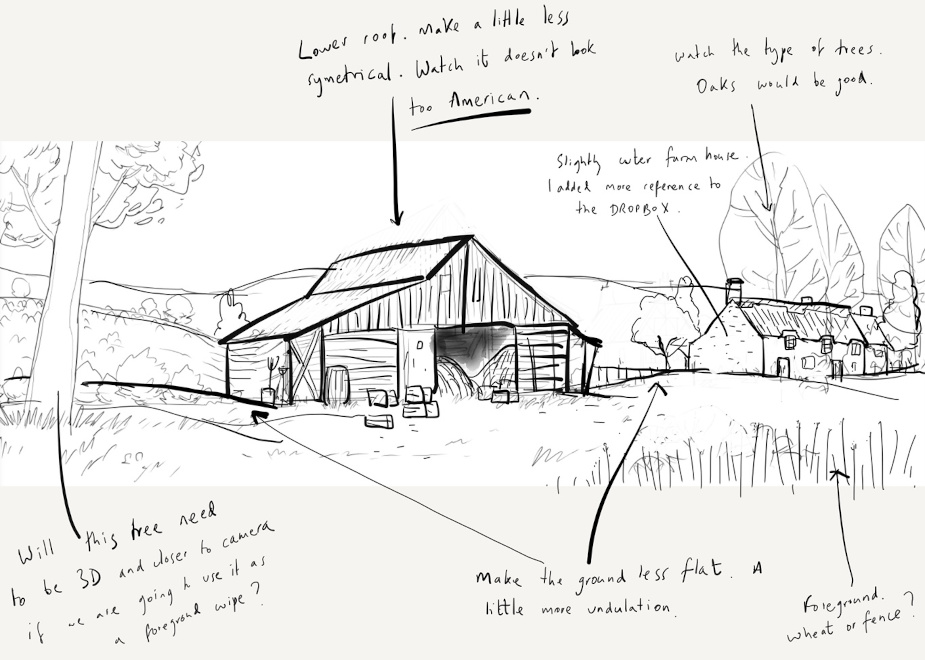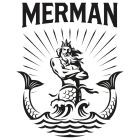
Behind GWR’s Nostalgia-Fuelled Famous Five Train Adventure

If you’ve grown up in the UK, chances are you’ve probably heard of or read about ‘The Famous Five’ (hence the name). Started in 1942, the series of children’s adventure books by writer Enid Blyton follows the story of five friends (Julian, Dick, George, Anne and Timothy all between the ages of 10 and 12) on their seemingly endless school holidays. ‘Five on a Treasure Island’, which is the first book of the series, gave a start to the children’s timeline and plunged them into endless mystery solving, treasure hunting and discovery around the English countryside and beyond. Think of it a little bit as the ‘Scooby-Doo’ of the UK.
After 21 books, during which British audiences closely followed the Five’s holiday crime-discovering, the Great Western Railway has organised their second grand return after their appearance in ‘Five and the Jetpack’ three years ago. The campaign, in collaboration with adam&eveDDB, Merman director Guy Manwaring and Not To Scale's animating trio Headless, is a perfect combination of nostalgia, 3D and 2D art, and stellar branding.
Again following the name format of the books, the film was dubbed ‘Five Get There First’ and it follows the main five characters discovering the benefits of train travel over cars. In a bid to have a day at the beach, Uncle Quentin and Aunt Fanny (George’s parents) agree to race the children by car. As the kids get on the train and prepare to set off, Quentin shouts “Last one there is a rotten egg” as he and Fanny speed off in their car.
The rest of the film sees the Five reach Dorset’s coast much faster and as they’re already enjoying the sun, sand and water, Uncle Quentin and Aunt Fanny face an array of disruptions through traffic, fields and farms with flying chickens. Paying homage to Enid Blyton’s naturalistic and atmospheric writing, the film carries through her warm tone and humour, as well as the idyllic English countryside backdrops.
Director Guy Manwaring explains that the creative team behind the campaign wanted to keep the energy and drama of the Jetpack spot, so it was paramount to build on that while exploring this new idea - positioning the car against the train. Besides this, as it was a continuation of a previous campaign, the bar was already set quite high.
“The first challenge for me was to find a way to cut between the two contrasting storylines without losing the sense of drama,” he explains. “After all, half of the story shows how relaxed and easy the Five’s day out is, so we wanted their experience to contrast as much as possible with Uncle Quentin and Aunt Fanny’s disastrous journey.” The other challenge was that Fanny and Quentin, despite being animated, had to adhere to road safety law - the spot wasn’t meant to portray or encourage reckless driving. “Even in the world of animation there were a lot of things we couldn’t show,” says Guy.
Despite the fact that he smashed both of these obstacles, Guy admits that it was ‘unusual’ that he had been brought on board before the animation crew was chosen. However, this placed his directorial views at the front of the production pipeline and helped him be part of the creative decision process alongside adam&eveDDB’s teams. “This turned out to be very important,” he adds. At the first meeting where the animators - Headless - were brought in, it became clear that the passion for the Five’s books was totally unilateral. Everybody on every team was certain that they had to do justice to Eileen Soper’s original illustrations in the books and bring that vintage ‘40s feeling while placing the characters in ambiguously modern times.
To achieve this, one head of the Headless team Adrian Garcia explains that a certain hand-crafted aspect had to be present in the 2D and 3D blend. “I always enjoy animating this sort of piece, as it gives me the opportunity to use hand-drawn animation alongside 3D in a creative way that allows us to get the best of both worlds - the warm human quality of the hand-painted look and the stylisation of line work in character animation. As well as the freedom and detail of the 3D space for staging the film. It allows us to transport our audience into a world that feels like it’s part of an illustration, not only by making things move in a flat canvas but also by creating an image that feels alive.”

Some pre-production sketches from Headless
From a director’s perspective, holding onto ‘40s and ‘50s elements while also blending them into the present day was essential. “It makes sense that Uncle Quentin might have an old sports car that he would choose to drive to the beach on a summer day, whilst the other cars on the road are more contemporary,” Guy explains, talking about how the details make up the entire picture. “We chose to make the tractor a little older as we preferred the aesthetic and it fitted the story for the car to get stuck behind a slow old vehicle.”
Since the Headless team was working with a high percentage of CGI elements, they were looking for ways to make the scenes look like they belong in the same world organically. So, they essentially had to degrade the image to avoid the ‘perfection’ look of digital elements that CGI gives by super smoothing movement. To organically blend the worlds together, Adri explains that the team used as many hand-drawn and painted materials as possible - painted backgrounds and textures especially.
Adri explains: “To make these hand-painted elements function in the 3D space, we had to use CGI and several effects in compositing. We used a limited colour palette and faded the image digitally so nothing looked too vibrant. The base colour layer was separated in dot halftones in physical printing, along with more subtle compositing effects to distort the images slightly and add just enough imperfection between frames to avoid the unrealistic smoothness of the 3D elements.” Additionally, the frame rates had to be reduced from a more traditional 24 fps to 12 fps, for that hand-crafted sense that audiences get but don’t really know why.
So now we know - the idyllic and super detailed backdrops were hand-drawn. But how were they chosen? For Guy, he approached the location search as if he was shooting a live-action project and admits he might have gotten ‘a little too obsessed’ with finding stations and lines that would make sense of the Five’s journey. While the seaside location was a no-brainer, as the children’s adventures mostly are on or around England’s south coast – plus it features GWR’s most travelled on train lines – the rest of the details had to be meticulously planned out on Google Earth. “I was looking for small stations and crossings that had the right sense of charm for the story,” says Guy. “When you are briefing matte painters and designing areas from scratch, it helps to know that the elements we were putting into the story were grounded in credibility.” Now you know - you can venture out to the English south coast in Famous Five style.

Pre-production sketch
Animation and contextual details are not the only elements that make this campaign so spot-on with the Famous Dive aesthetic - it’s also the brilliant acting. Richard E. Grant, who also voiced Uncle Quentin in the previous, and Fanny’s voice in the face of Jennifer Saunders, both delivered timeless comedy and energy to their performances, while they simulated the car’s bumpy ride across the field in the studio. For Guy, the voices had to be ‘quintessentially British’ and slightly recognisable, to bring that twang of nostalgia. Especially for Fanny, the acting had to be on point, as her character goes from being super composed, to full hysteria after losing control of the car and veering through the hedge.
Adri explains that the biggest challenge from an animation standpoint was recreating a world which is in tune with a pre-existing universe and modern day, while also making sense of real places in the English countryside. The level of detail, research and development going into the film was astonishing from every perspective - and according to Adri was also the most fun part of the project.
Reflecting on the experience of creating the nostalgia-fueled spot, Guy concludes: “With any luck, the combination of the ad and the current good weather will encourage as many people as possible to head to the coast - as long as they go by train!”













